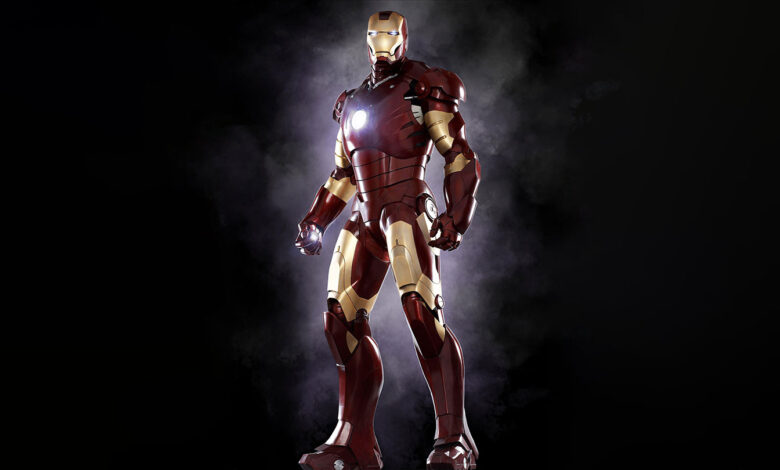Move over Iron Man, exoskeletons are getting real


aerospace: A research field devoted to the study of Earth’s atmosphere and the space beyond or to aircraft that travel in the atmosphere and space.
agility: Having the ability to move quickly (and pivot as needed) with skill and little apparent effort. Sometimes the term is applied to thinking and project management as well as to athletic pursuits.
alloy: A blend of a metal and one or more elements (metallic or non-metallic) in which the individual elements are thoroughly mixed at a microscopic level.
astronaut: Someone trained to travel into space for research and exploration.
battery: A device that can convert chemical energy into electrical energy.
blow: (noun) A term for the materials exhaled by whales through their blowholes. This can include air, mucus, germs and sometimes even seawater.
casing: (n.) Some structure that encloses the potentially fragile working parts of a device, such as a cellular phone. It affords those internal parts protection by fully covering, or encasing, them. (in food science) The outer skin or material used to hold — or encase — the meat and other ingredients used to make a sausage.
cerebral palsy: A group of disorders that affect someone’s ability to move. It stems from damage to the developing brain during pregnancy, at birth or shortly thereafter. Symptoms can include poor muscle coordination, loss of muscle tone (strength), poor reflexes and balance. The disease has no cure, but its effects can improve or worsen as someone ages. Some patients also may have other brain impairments that affect speech, hearing, sight and more.
component: Something that is part of something else (such as pieces that go on an electronic circuit board or ingredients that go into a cookie recipe).
electricity: A flow of charge, usually from the movement of negatively charged particles, called electrons.
engineer: A person who uses science and math to solve problems. As a verb, to engineer means to design a device, material or process that will solve some problem or unmet need.
exoskeleton: A hard, protective outer body covering of many animals that lack a true skeleton, such as an insect, crustacean or mollusk. The exoskeletons of insects and crustaceans are largely made of chitin.
fabric: Any flexible material that is woven, knitted or can be fused into a sheet by heat or compression and drying.
force: Some outside influence that can change the motion of an object, hold objects close to one another, or produce motion or stress in a stationary object.
gigawatt: It’s a unit of electric power equal to one billion watts. Put another way, that’s about the power typically needed to provide the electricity needs of 750,000 U.S. homes.
gravity: The force that attracts anything with mass, or bulk, toward any other thing with mass. The more mass that something has, the greater its gravity.
inertia: The tendency of a moving object to resist a change in its motion — or, for a resting object, to begin moving.
iron: A metallic element that is common within minerals in Earth’s crust and in its hot core. This metal also is found in cosmic dust and in many meteorites.
laser: A device that generates an intense beam of coherent light of a single color. Lasers are used in drilling and cutting, alignment and guidance, in data storage and in surgery.
lift: An upward force on an object. It may occur when an object (such as a balloon) is filled with a gas that weighs less than air; it can also result when a low-pressure area occurs above an object (such as an airplane wing).
lithium: A soft, silvery metallic element. It’s the lightest of all metals and very reactive. It is used in batteries and ceramics.
machine learning: A technique in computer science that allows computers to learn from examples or experience. Machine learning is the basis of some forms of artificial intelligence (AI). For instance, a machine-learning system might compare X-rays of lung tissue in people with cancer and then compare these to whether and how long a patient survived after being given a particular treatment. In the future, that AI system might be able to look at a new patient’s lung scans and predict how well they will respond to a treatment.
manufacturing: The making of things, usually on a large scale.
metal: Something that conducts electricity well, tends to be shiny (reflective) and is malleable (meaning it can be reshaped with heat and not too much force or pressure).
model: A simulation of a real-world event (usually using a computer) that has been developed to predict one or more likely outcomes. Or an individual that is meant to display how something would work in or look on others.
moon: The natural satellite of any planet.
motor: A device that converts electricity into mechanical motion. (in biology) A term referring to movement.
muscle: A type of tissue used to produce movement by contracting its cells, known as muscle fibers. Muscle is rich in protein, which is why predatory species seek prey containing lots of this tissue.
polymer: A substance made from long chains of repeating groups of atoms. Manufactured polymers include nylon, polyvinyl chloride (better known as PVC) and many types of plastics. Natural polymers include rubber, silk and cellulose (found in plants and used to make paper, for example).
prototype: A first or early model of some device, system or product that still needs to be perfected.
robot: A machine that can sense its environment, process information and respond with specific actions. Some robots can act without any human input, while others are guided by a human.
technology: The application of scientific knowledge for practical purposes, especially in industry — or the devices, processes and systems that result from those efforts.
tool: An object that a person or other animal makes or obtains and then uses to carry out some purpose such as reaching food, defending itself or grooming.
variety: (in agriculture) The term that plant scientists give to a distinct breed (subspecies) of plant with desirable traits. If the plants were bred intentionally, they are referred to as cultivated varieties, or cultivars.
wireless: (in telecommunications) An adjective that describes the ability of certain devices to send and receive radio signals over the air. It often refers to Wi-Fi networks and the networks operated by cell-phone companies to transmit data called up by phone users.



